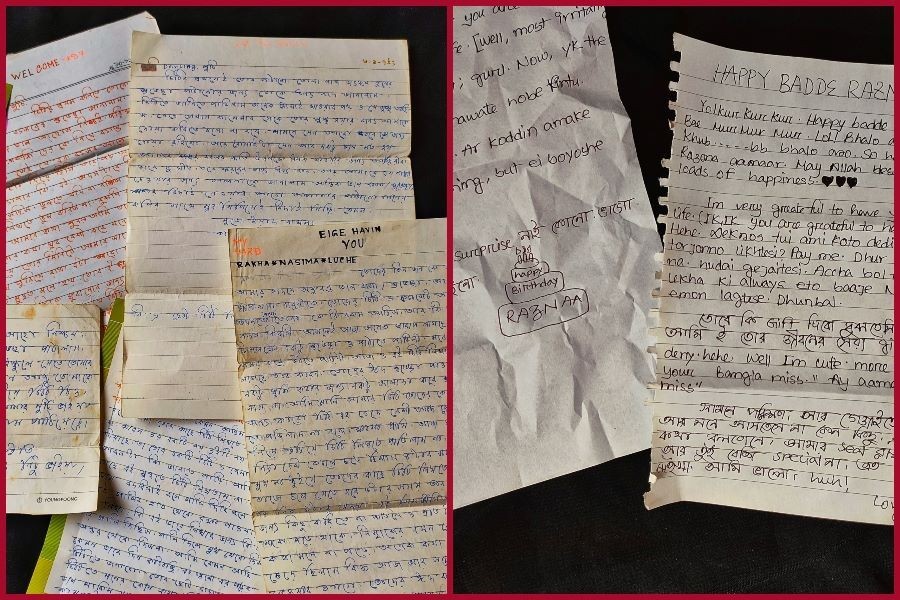"Take good care of yourself. I am well, but my heart is sick. It will heal when you come. You'll come, right?..."
Aparna concluded with these words in a letter to Apu. In his 1959 film The World of Apu, better known as Apur Sansar, Satyajit Ray portrayed one such emotional scene through this letter sent by a rural bride to her husband.
This particular scene holds the plight of the woman who is waiting for her beloved to respond. Even though they are not said aloud, the words establish a perspective of reality that gives the receiver a glimpse of the sender's unquenchable desire to reunite in their known world.
That's what letters do to us; they convey an ethereal touch that feels incredibly genuine.
Nowadays, the custom of sending and receiving letters has practically gone. This previously essential method of communication appears to have been forgotten over time. It isn't easy to discover letters now that enriched opportunities for self-expression, forged professional connections, and reunited friends and family.
Even if it is no longer handwritten, using letters is still crucial in institutional work. But emails or automated letters do not have the appeal of handwritten letters.
Handwritten letters have a long history. According to the ancient historian Hellanicus, the first handwritten letter was sent by the Persian Queen Atossa in approximately 500 BC. As more people became literate, letters' popularity as a means of communication expanded. References to letters are found in the writings of Herodotus and Thucydides.
Throughout history, we learn how treaties were made, or wars were fought through the exchange of letters between kings. There was also variety in delivering letters; it is said that news was delivered by riding a horse or sending a letter on the neck of a pigeon or bird.
Even in our subcontinent, during the reign of Emperor Sher Shah, the custom of delivering mail on horseback was in use. Over time the landlords also continued this practice. Later, the runners arrive.
During the British era, when the postal service became widespread in this subcontinent, the responsibility and duty of these runners were to reach the mail from the main post office to the specific post office in the remote area before the sun rose in the morning and from there, bringing the mail to the main post office as quickly as possible.
Runners would run from one village to another in the darkness of the night with sacks of letters on their backs, spears in one hand and hurricanes in the other.
With the improvement of the communication system, this practice was also abolished. By then, people don't have to wait for months to get a letter.
Interesting information can be found if you look into the letter's history. There was a time when stationeries used to have 'Potro Mitali' guides that included names and postal addresses of people who were willing to be penpals.
People who wished to start pen pal relationships would gather these guides, search for their favourite people, and share numerous tales of joys and tragedies with them. The letters were not just being exchanged under the pretext of amusement but also showcased the writers' artistic talent.
As a letter has a history, the letter itself has sometimes been a part of history-making.
For example, King Henry VIII of Britain had an affair with Anne Boleyn while still married. He had to break with the Roman Catholic Church to legitimise that love that changed Britain's religious structure forever.
And this historic love was offered through letters. Again, the letter exchanged between Winston Churchill and his own assistant private secretary Eliot Crawshay during the Second World War has become a historical document today.
In the letter, Crawshay insisted that Churchill secure the best possible peace terms by using the nuisance value while they still had it. Otherwise, they will only be in a worse situation than France.
But Churchill simply refused it in disgrace. History in Britain would have taken a very different turn if Churchill had agreed to this letter.
The future of the handwritten letter is uncertain, despite its illustrious past. People are losing their genuine feelings in the rush of technology.
However, letters can be found in stories, poetry, music, and movies. A study found that 64 per cent of people wouldn't have the time to sit down and write a single letter by hand over the course of a year.
However, 69 per cent of respondents claimed that receiving a written letter in the post meant more to them than receiving a text, tweet, or Facebook message.
So why not write a letter to someone you care about without considering whether the practice of writing letters will disappear or not? After all, it's you who bring about the change!


